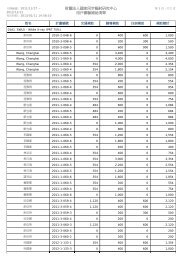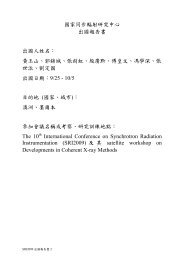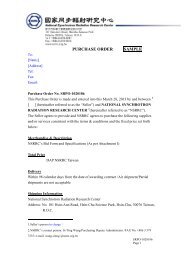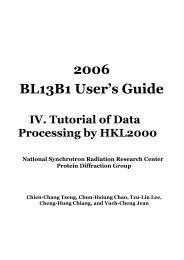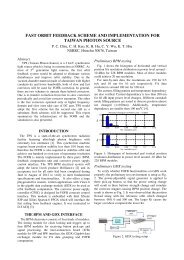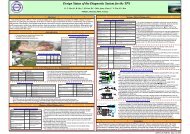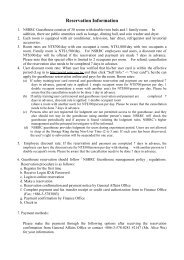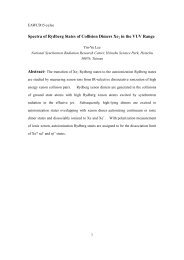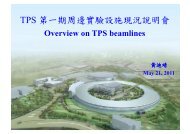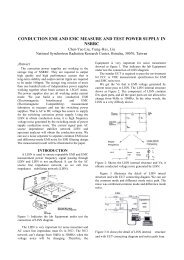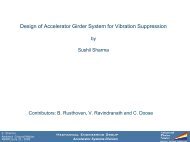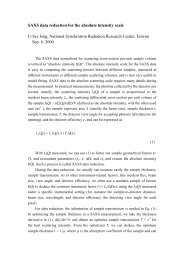Figures & Facts
Figures & Facts
Figures & Facts
You also want an ePaper? Increase the reach of your titles
YUMPU automatically turns print PDFs into web optimized ePapers that Google loves.
<strong>Figures</strong> & <strong>Facts</strong><br />
Febrary 2008<br />
NSRRC Evaluates EPICS as the Possible Choice for its<br />
Future Accelerator<br />
An EPICS (Experimental Physics and Industrial Control<br />
System) training course is held to give control specialists<br />
an overview of its implementations in the control system<br />
of the accelerator from February 18 to 27. NSRRC staff of<br />
the Instrumentation & Control Group (IC group), RF Group,<br />
and Beamline Group have geared up on putting plans and<br />
tasks in place for Taiwan Photon Source (TPS), the next<br />
accelerator that is presently scheduled to have groundbreaking<br />
construction at around the end of 2009.<br />
One of the key agenda is to fully evaluate available<br />
software that will be adopted as the backbone of the<br />
control systems for the accelerator. Programs include<br />
lectures, which are offered by a service provider, and<br />
intensive hand-on experiments. Staff has run through<br />
examples to build prototypes and to simulate the<br />
control system with parameters designed for the future<br />
accelerator.<br />
speed up the processing of experimental data of NSRRC<br />
users, was offered on March 6. Getting new users to learn<br />
old tricks is one of the tasks the NSRRC beamline managers<br />
deal with every single day. Facing the increasing number<br />
of users each year that leads to shorter time slot granted to<br />
each research team, solutions were compiled and carried<br />
out in recent months. As a result, users see more hand-on<br />
training offered by NSRRC staff beginning 2008.<br />
30 students in the class were required to study the<br />
class material and to download the needed programs<br />
beforehand. The course began with the installation of<br />
GSAS and EXPGUI. Next, each person used their own XRD<br />
experimental data to feed the systems for exercise. To run<br />
the programs, each trainee is also required to gather cell<br />
parameters, space group, and atomic coordinates as inputs.<br />
If unavailable, the built-in examples were then used<br />
instead.<br />
The training course produced a set of feedback and<br />
hit-and-miss score cards for fitting into the review process<br />
of a (or more) programmable software solutions of the<br />
control systems.<br />
GSAS Training Course<br />
April 2008<br />
2008 Synchrotron Radiation Protein<br />
Crystallography Workshop<br />
EPICS Training Course<br />
March 2008<br />
A One-day GSAS Training Offers NSRRC Users a<br />
Quick-start of Mastering the Analytical Tool<br />
Generalized Structure and Analysis Software (GSAS)<br />
EXPGUI, a graphical user interface for GSAS, which can<br />
Automation on Protein Crystallography Beamlines<br />
at NSRRC<br />
A two-day workshop on Automation on Protein<br />
Crystallography Beamlines at NSRRC was held at NSRRC<br />
on April 9 - 10. There were 23 attendees in total as registration<br />
was limited to one representative per user<br />
group.<br />
141



